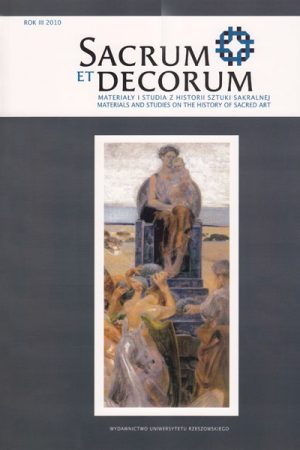Apokalipsa [The Apocalypse] by Grzegorz Bednarski. Escalation of Evil or a Message of Hope?
Keywords:
GRZEGORZ BEDNARSKI, MODERN ART, THE BOOK OF REVELATIONAbstract
The subject of the article are Grzegorz Bednarski's illustrations for the Book of the Revelation of Saint John the Divine, published in a new translation from Greek in 2008 by a publishig house Wydawnictwo sw. Wojciecha in Poznan. The pictures deftly connect tradition with modernity, both when it comes to their style and their theological message. Contemporary theological criticism usually tries to free the interpretation of The Book of Revelation from the analyses which see it as a literal, frightening description of the end of the world, choosing to emphasize instead its supernatural and religious aspects. Nevertheless, thanks to the iconographic invention and the expressiveness of painting, as well as the inspiration from the works of old masters, including German ones, the discussed illustrations have not become a narrative of God 'softened' and 'smoothened' by the 'new religiosity' which tones down the difficult message of the Bible in order to assuage the believers' fear of punishment and give them hope for eternal life. Through decreasing the dramatic features of some illustrations and most importantly, through being ordered by the translator and the church publishing house to spare his readers the particular cruelty for which the chapters eight, nine, sixteen and eighteen are notorious, the Krakow painter makes his viewers face the angry God who declares a war against his enemies and subjugates them by fire and sword. The work of Grzegorz Bednarski, deeply rooted in the Judaeo-Christian tradition, seems to grow out of the belief that fear of the Lord, which is incidentally one of the seven gifts of the Holy Spirit, is both a permanent element of man's attitude toward his Maker, and a positive and indispensable part of our spirituality.Downloads
Downloads
Published
How to Cite
Issue
Section
License
Copyright (c) 2010 Sacrum et Decorum

This work is licensed under a Creative Commons Attribution-NonCommercial-NoDerivatives 4.0 International License.
In line with the Open Access policy, authors retain full copyright to their articles – without restrictions.
Authors can deposit their articles in a repository of their choice.


